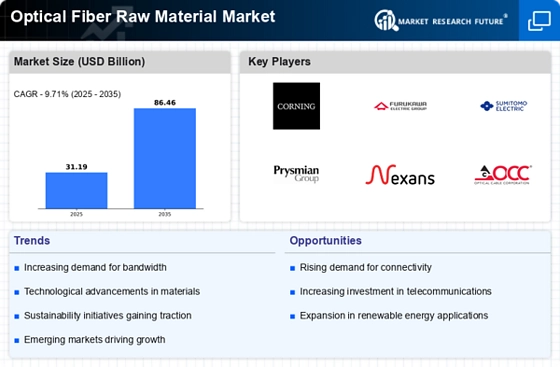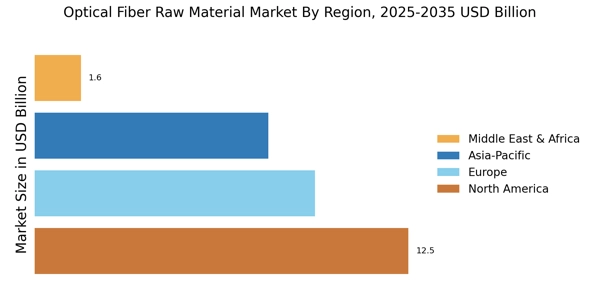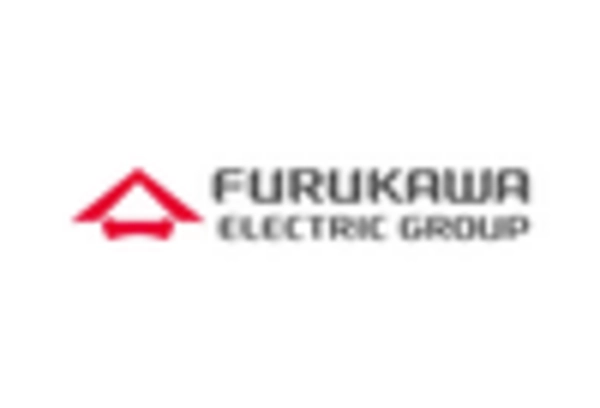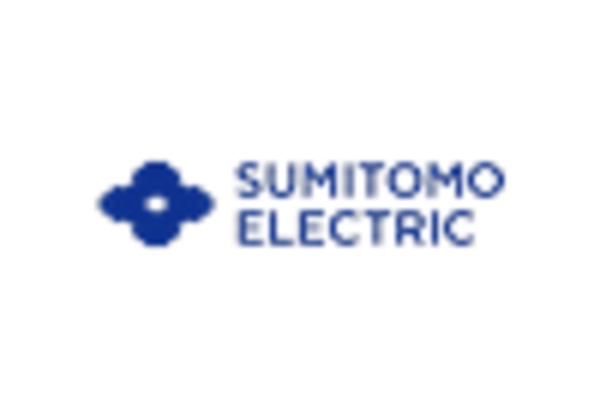Growth in Data Centers
The Optical Fiber Raw Material Market is significantly influenced by the rapid expansion of data centers worldwide. As businesses increasingly rely on cloud computing and data storage solutions, the demand for high-capacity optical fiber cables rises. Data centers require robust and efficient connectivity solutions, which are primarily facilitated by optical fibers. Market analysis suggests that the data center market is projected to grow at a compound annual growth rate of over 10% in the coming years. This growth directly correlates with the rising need for optical fiber raw materials, as data centers seek to enhance their infrastructure to accommodate the growing volume of data traffic and ensure seamless connectivity.
Emergence of Smart Cities
The development of smart cities is a pivotal driver for the Optical Fiber Raw Material Market. As urban areas evolve to incorporate advanced technologies for improved efficiency and sustainability, the demand for reliable communication networks becomes paramount. Optical fibers play a crucial role in enabling the infrastructure of smart cities, facilitating real-time data transmission for various applications such as traffic management, public safety, and energy efficiency. The Optical Fiber Raw Material Market is anticipated to reach substantial valuations, indicating a robust demand for optical fiber solutions. This trend suggests that investments in optical fiber raw materials will likely increase as cities strive to enhance their technological capabilities and connectivity.
Rising Adoption of IoT Devices
The proliferation of Internet of Things (IoT) devices is a significant catalyst for the Optical Fiber Raw Material Market. As more devices become interconnected, the need for high-speed and reliable data transmission increases, necessitating the use of optical fiber technology. The IoT market is expected to witness exponential growth, with billions of devices projected to be connected in the near future. This surge in IoT adoption creates a corresponding demand for optical fiber cables, which require specific raw materials for production. Consequently, manufacturers in the optical fiber raw material sector are likely to focus on enhancing their supply chains to meet the escalating needs of the IoT ecosystem.
Increasing Internet Penetration
The Optical Fiber Raw Material Market is experiencing a surge in demand due to the increasing penetration of the internet across various regions. As more households and businesses seek high-speed internet connectivity, the need for optical fiber cables, which rely on specific raw materials, intensifies. Reports indicate that the number of internet users has reached approximately 5 billion, highlighting a significant market opportunity. This trend is likely to continue as governments and private sectors invest in digital infrastructure, further propelling the demand for optical fiber raw materials. The expansion of 5G networks also contributes to this growth, as these networks require advanced optical fiber solutions to support their high-speed data transmission capabilities.
Investment in Telecommunications Infrastructure
Investment in telecommunications infrastructure is a critical driver for the Optical Fiber Raw Material Market. Governments and private entities are increasingly allocating resources to enhance communication networks, particularly in underserved regions. This investment is essential for improving connectivity and ensuring that optical fiber technology is accessible to a broader population. Reports indicate that global telecommunications spending is projected to reach trillions of dollars, underscoring the importance of optical fiber raw materials in this context. As infrastructure projects unfold, the demand for high-quality optical fiber materials is expected to rise, presenting opportunities for manufacturers and suppliers in the optical fiber raw material market.


















Leave a Comment